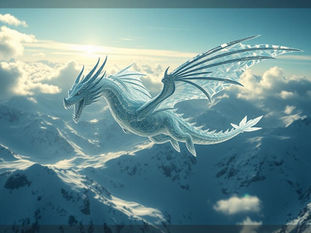
Tips for Better Midjourney Images: Using the Keyword Method
May 3
4 min read
0
3
0

Creating impressive pictures from just text prompts using AI tools like Midjourney is possible. It takes some practice. Getting the exact image you want means finding the right words. This is where a keyword method can help. This approach focuses on specific terms to guide the AI, helping you get the desired look.
What is Midjourney?
Midjourney is an AI tool that generates images from text descriptions. You type words or phrases, and the AI creates pictures based on them. Think of it like talking to a very fast artist who can imagine anything you describe.
You can use simple prompts, even just one word or an emoji. Or you can use long, detailed descriptions. Midjourney predicts data to create visuals, much like ChatGPT predicts text. It's a powerful tool for creating unique art and images instantly.
The Keyword Prompt Method Explained
Getting specific looks, like a certain art style, can be hard if you don't know the technical terms. For example, if you want something to look like "chalk art" but don't know the terms chalk artists use, it is hard to tell Midjourney exactly what you want.
The keyword prompt method helps by using exact terms to call out specific aesthetics. It's like building a list of tags or labels that describe the visual style you want. You line up these terms, often separated by commas, to organize your thoughts and guide the AI.
Putting Keywords to Work
Finding the right keywords takes work. One way is to use AI tools like ChatGPT. You can ask these tools for technical terms related to a specific art form or style. This gives you a starting list of potential keywords.
Once you have keywords, you need to test them. Experiment with each word to see how it affects the image. You might find that some terms bring in unwanted elements. For instance, using "chalk art" might also create images of sidewalks, even if you only wanted the look of the art itself on a board.
You need to test different combinations and word order. Placing a keyword earlier or later in the prompt can change the result. This testing helps you build a set of keywords that reliably produce the aesthetic you are aiming for. It's an experimental process, but it leads to more predictable and better images.
Making this process faster means you can create more images and experiment more freely. To help you with the repetitive parts of generating and managing Midjourney images, consider exploring tools like the Midjourney Automation Suite from TitanXT. It can help streamline your workflow, so you spend less time on manual steps and more time on creative prompting.
Ideas for Everyday Midjourney Use
Midjourney isn't just for professional artists or designers. Many people can use it daily:
Create custom coloring book pages for kids. Describe characters or scenes, ask for simple lines suitable for coloring, and print them out.
Generate images for personal projects, social media, or even party invitations.
Use it for inspiration. Instead of searching online image sites, use Midjourney to create mood boards or explore visual ideas instantly. Type in descriptive words about a feeling, a place, or a style, and see what comes back.
Make mazes or other activity sheets by describing the layout and style you want.
Midjourney puts creative power in your hands, even if you don't have traditional art skills. It can make everyday tasks more fun or help you visualize ideas quickly.
To generate many variations or manage large batches of images for these projects, automation can be a lifesaver. Check out the Midjourney Automation Suite from TitanXT to see how you can speed up generating and organizing your creations.
Using AI Images in Paid Work: What About Rights?
A big question about AI images is who owns them. If you create an image with Midjourney, is it completely yours? This area is still developing.
As a safety step, try to avoid using the names of living artists or specific characters (like comic book heroes) in your prompts if you plan to use the images professionally or sell them. While you might be okay using those names for personal fun, using them for commercial projects carries more risk regarding copyright.
If you use AI-created images for a client or corporate project, it's best to be open about it. Talk with your client about the use of AI. Some clients may be okay with it, especially for projects with a short life or where quick content creation is a priority. Others, particularly those with many lawyers, might avoid AI images until the legal situation is clearer. Being transparent is key.
Keep in mind that some AI image tools train their models using images they have confirmed rights to. Understanding how the specific tool you use was trained can give you some idea of potential risks, though the legal aspect of AI-generated content is still being worked out globally.
Whether you are creating images for fun or work, managing your generated files is important. Tools like the Midjourney Automation Suite from TitanXT can help keep your work organized and easier to handle, no matter what you create.
In Summary
Midjourney and other text-to-image tools are changing how we create visuals. Using a keyword prompt method helps you get more precise results by guiding the AI with specific terms related to the look you want. It takes experimentation to find the right keywords, but it's a powerful way to control the output.
AI image generation has many uses, from personal projects like making coloring pages to professional applications. The legal rights surrounding AI-generated images are still unclear, so caution and transparency, especially in corporate settings, are wise steps.
Don't be afraid to try AI image tools. They can boost your creativity and efficiency. Experiment, build your keyword library, and see what amazing images you can make.






